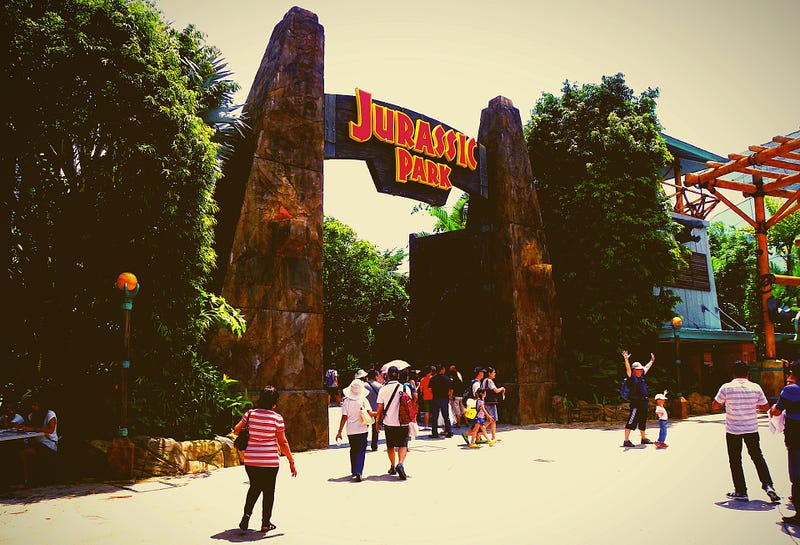Misconceptions About Dinosaurs in Jurassic Park
Written on
Chapter 1: Introduction to Jurassic Park's Portrayal of Dinosaurs
Jurassic Park, a landmark film in Hollywood, has significantly influenced the public's perception of dinosaurs. The movie aimed to present these ancient creatures as dynamic, intelligent beings, diverging from the outdated image of them as slow and unintelligent. However, despite these efforts, several inaccuracies contradict what paleontologists understand today.
Section 1.1: The Misinformation About Brachiosaurus
Upon entering the park, visitors are mesmerized by a towering long-necked dinosaur, portrayed as a Brachiosaurus. Yet, this identification is misleading.
The film's depiction is based on the B. brancai specimen, which was later reclassified into a different genus altogether. The creature showcased in Jurassic Park is actually Giraffatitan brancai.

Section 1.2: The Chase Scene with Tyrannosaurus rex
One of the film's most thrilling moments involves a Tyrannosaurus rex pursuing the characters in a jeep. While this scene is iconic, it is scientifically inaccurate.
Research indicates that T. rex was not built for speed. With an estimated weight of 5 to 9 tons, this dinosaur was quite heavy and could only reach speeds of about 12 mph (20 kph) at best. Paleontologist Stephen Brussate notes, "There’s no way T. rex could have chased down that jeep if it was going at highway speeds."
Section 1.3: T. rex's Vision Misconceptions
In a dramatic scene, Alan Grant advises Lex Murphy to remain still, believing T. rex cannot see them if they don’t move. Contrary to this portrayal, the dinosaur likely had excellent vision.
With eyesight estimated to be thirteen times better than that of humans, T. rex would have easily detected movement and possibly even stationary objects nearby.
Chapter 2: The Misrepresentation of Velociraptors
The Velociraptors in Jurassic Park are depicted as large, featherless predators, which is a significant deviation from scientific findings.
These creatures are more accurately based on Deinonychus antirrhopus, which was much larger than the true Velociraptor mongoliensis. Moreover, evidence suggests that members of the Dromaeosauridae family were feathered, challenging the film's representation of them as scaly.
Section 2.1: The Myth of the Venomous Dilophosaurus
Dilophosaurus plays a memorable role in the movie, particularly in its attack on Dennis Nedry. However, the portrayal of this dinosaur is riddled with inaccuracies.
The film shows Dilophosaurus with a frill and the ability to spit venom, attributes that have no basis in fossil evidence. In reality, this dinosaur was much larger, measuring around 7 meters (23 feet) long, making the film's version seem quite diminutive.
Epilogue: The Impact of Scientific Inaccuracies
Despite the inaccuracies discussed, many fans still cherish Jurassic Park. It is essential to recognize that the film is a science fiction narrative rather than a documentary. The cinematic choices made to enhance storytelling are understandable, especially given the limited knowledge of dinosaurs available in 1993.
The evolution of paleontological research since then means that some representations may no longer align with current understanding.
Relevant Reads:
- ‘Jurassic World: Dominion’ Will Feature Feathered Dinosaurs but Many Fans Have Reasons to Feel…
- Why This Blockbuster Scene Still Amazes Us 28 Years Later
- Hollywood Lied to You: This Is How the Real Jurassic World Would Have Looked Like
References:
Taylor, M.P. (2009). “A Re-evaluation of Brachiosaurus altithorax Riggs 1903 (Dinosauria, Sauropod) and its generic separation from Giraffatitan brancai (Janensch 1914)” (PDF). Journal of Vertebrate Paleontology, Link: http://www.miketaylor.org.uk/dino/pubs/taylor2009/Taylor2009-brachiosaurus-and-giraffatitan.pdf